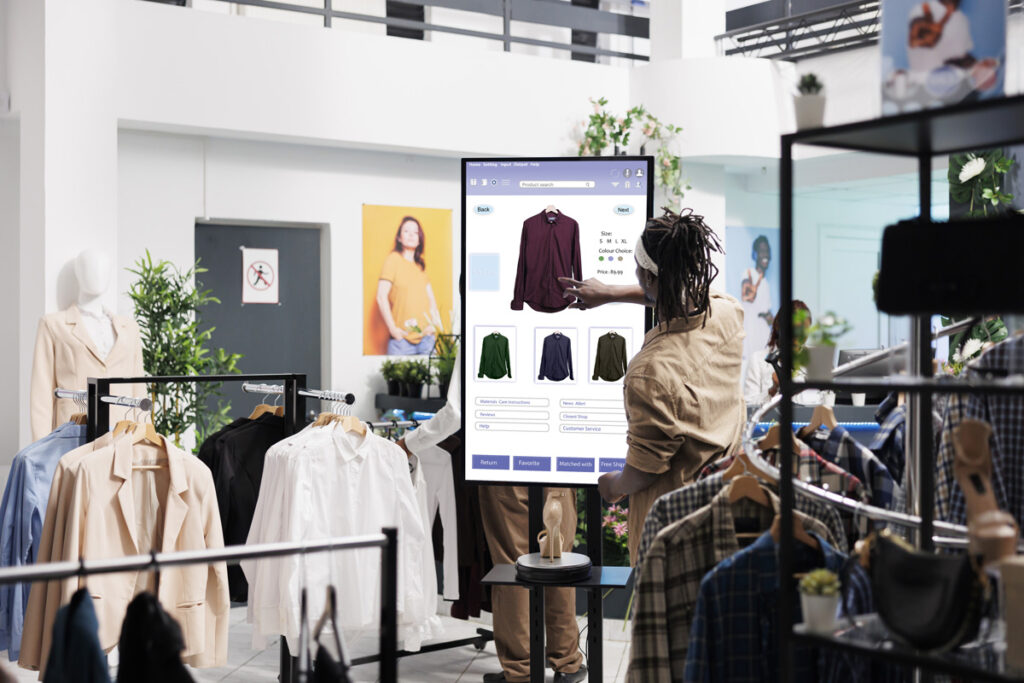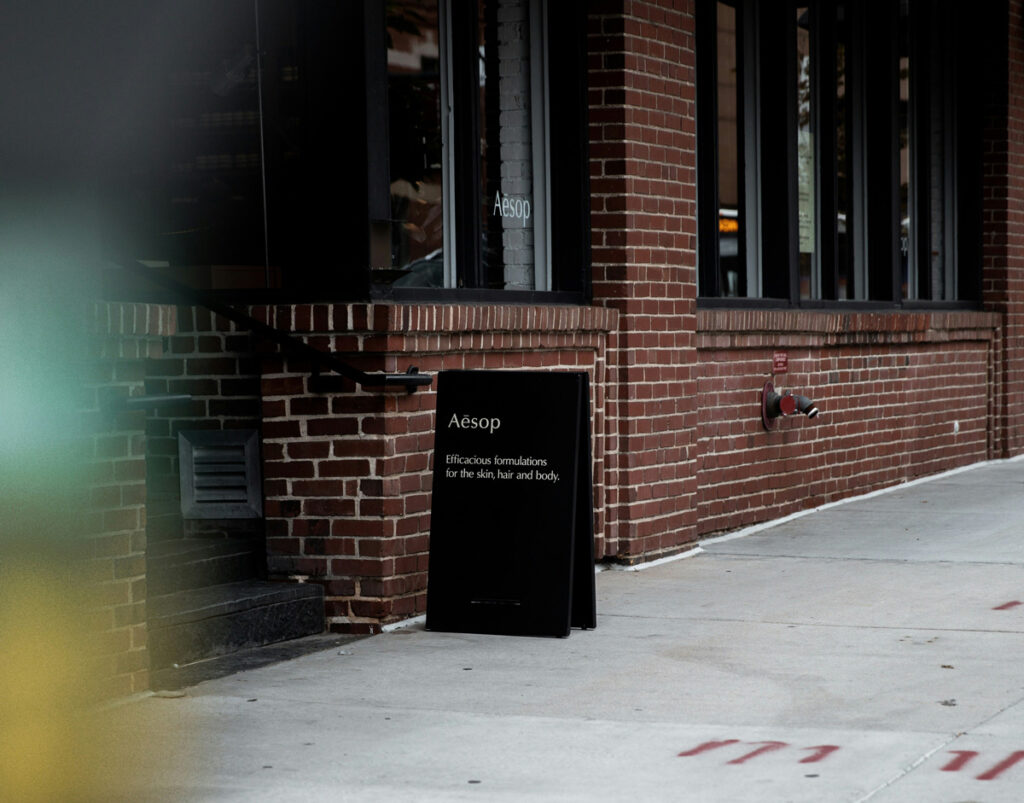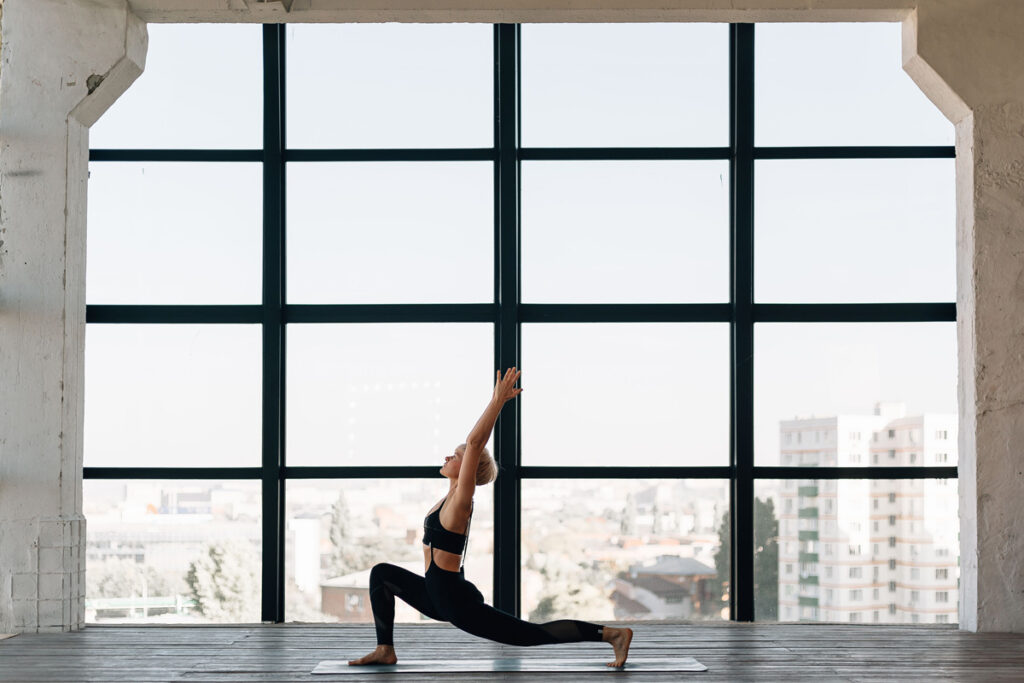Consumer behavior is always changing, responding to tech leaps, societal waves, and changing tastes. The common thread? A hunger for authentic storytelling and community-focused experiences. Let’s explore the consumer behavior trends you need to know about.

1. The Power of Storytelling: Human Connection in AI Strategies
Consumer trends in 2023 focused on the use of AI strategies to streamline customer experiences in retail and in the restaurant industry. The integration of AI-powered drive-thrus at restaurants exemplified this trend, where sophisticated AI algorithms predicted and expedited orders based on individual preferences, reducing wait times and enhancing overall efficiency.
Augmented reality (AR) emerged as a game-changer in the retail landscape, transforming the shopping experience, while the gamification of retail experiences through AI-driven incentives, challenges, and rewards systems fostered consumer engagement and also encouraged brand loyalty by making shopping more interactive and entertaining.
In 2024, storytelling will take center stage as brands look for more meaningful ways to connect with their communities. The technology behind AI-generated content will still play a vital role, but even in the era of AI-driven interactions, authentic human connections cannot be replaced.
Takeaway: Look for more companies to not only invest in AI technologies to streamline processes, but to also enhance and augment the human experience through Human-AI Collaboration. This trend emphasizes leveraging AI’s power while keeping essential elements like empathy, understanding, and emotional intelligence that are inherent in human connections.
2. An Appetite for Experiences: Consumers Crave Emotional Connections
Driven by a craving for emotionally resonant experiences, the winning strategies of 2024 will orbit around spaces, services, and engagements centered on personal metamorphosis.
Fueled by the heightened emphasis on health post-pandemic, this trend intertwines self-care with both sensorial indulgence and collective experiences. H&M is already leading the way by expanding the company’s athletic brand to include “Move Studios,” a kinetic and tactile playground for everyone. Boasting color-therapy-infused workouts, the studios offer daily classes that encourage movement for every body and challenge customers to be pushed.
This trend dives deeper into the spectrum of human emotions and the desire for personal transformation.
Takeaway: Look for more retailers to integrate experiential elements that fuse sensorial gratification with personal transformation within retail spaces. As brands recognize the evolving desires of today’s consumers, expect a surge in initiatives fostering connections that elevate emotions and encourage individual growth.
3. HQ Insight: Peeking Inside a Brand
While the public can’t walk into the office space at Google’s headquarters, they can now catch a glimpse of the inner workings of a brand nearly everyone has come to know.
Google recently opened a small section of its Mountain View, California, campus to the public, creating a “visitor experience” that includes a cafe and Google retail store. The new visitor center also features a room where community groups can use the space for meetings and events.
In a CNBC report, campus research and design director Michelle Kaufmann said with the speed by which innovation is moving, it’s important for more companies to have in-person spaces available for collaboration.
“It’s a step in not being an ivory tower and hopefully it can be a blueprint for how the community can be more involved,” she said in the article.
Across the country, TONS Pittsburgh is a store that goes beyond the traditional retail experience by offering a lifestyle and shopping. In addition to beauty products and wardrobe staples, TONS offers a spacious, well-lit interior that is designed to welcome consumers and give them a peek into the development of its brands.
Upstairs, shoppers can collaborate and share ideas in fashion, art, and culture during live events, movie screenings, and other social events. There’s even a photography studio where photos are taken onsite for the store’s website and ecommerce listings.
Takeaway: Look for more stores and headquarters to foster connections between their brand and their customers while offering immersive experiences beyond mere retail.

4. Honoring Heritage: A Strategic Fusion of Design and Narrative
A notable trend is appearing as more retailers are embracing the celebration of heritage—infusing products, designs, and narratives that pay homage to their rich cultural or historical origins.
The opening of an Aesop Hong Kong last year showcases how a space can pay homage to local cultural heritage while also serving as a functional niche where customers can explore products.
Created using motifs and materials that hold cultural significance, the new store includes design features like cloudy pattern boards, a design staple from the 1970s and 1980s, and a mosaic floor using reclaimed veneer that pays tribute to local manufacturing.
Takeaway: In an evolving retail landscape, paying homage to cultural heritage is not merely an aesthetic choice, but also a strategic fusion of design and narrative that creates immersive brand experiences that foster deeper connections between consumers and the brand’s roots.

5. Seeking Solace: The Continued Rise of Mindful Retail
Imagine seeking solace, not in an upscale wellness retreat, but within the confines of a familiar retail space. Several retailers have acknowledged the importance of crafting serene and tranquil atmospheres within their stores, as they work to curate more mindful retail experiences.
This shift toward a holistic experience involves the integration of calming scents, subdued lighting, soft melodies and nature-inspired elements, culminating in a multi-sensory journey for visitors. Esteemed brands like West Elm have channeled their efforts into designing stores that evoke a desire for extended exploration through purposeful design.
Other retailers like Lululemon are redefining shopping experiences by incorporating spaces tailored for meditation and yoga. Here, the focus revolves around curating a holistic and tranquil environment that encourages customers to take part in classes or simply unwind in a peaceful setting.
Takeaway: Initiatives like those mirror a broader trend among retailers—an emphasis on cultivating mindful shopping spaces that prioritize a slower, more intentional shopper journey. Look for more spaces to grab a piece of the wellness pie by prioritizing minimalistic aesthetics, quality, and sustainability.





